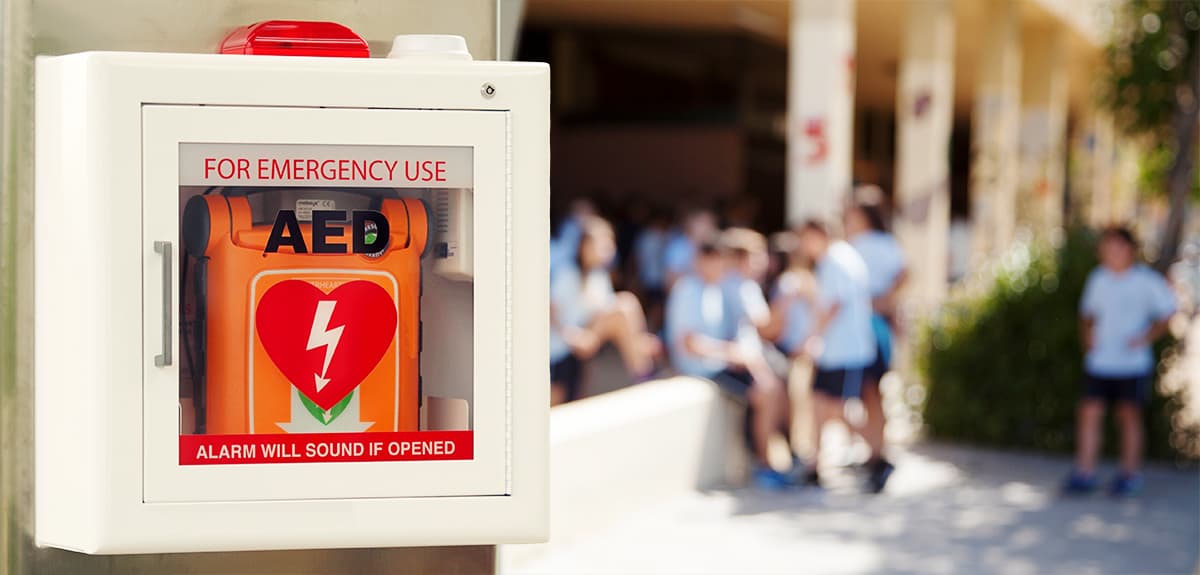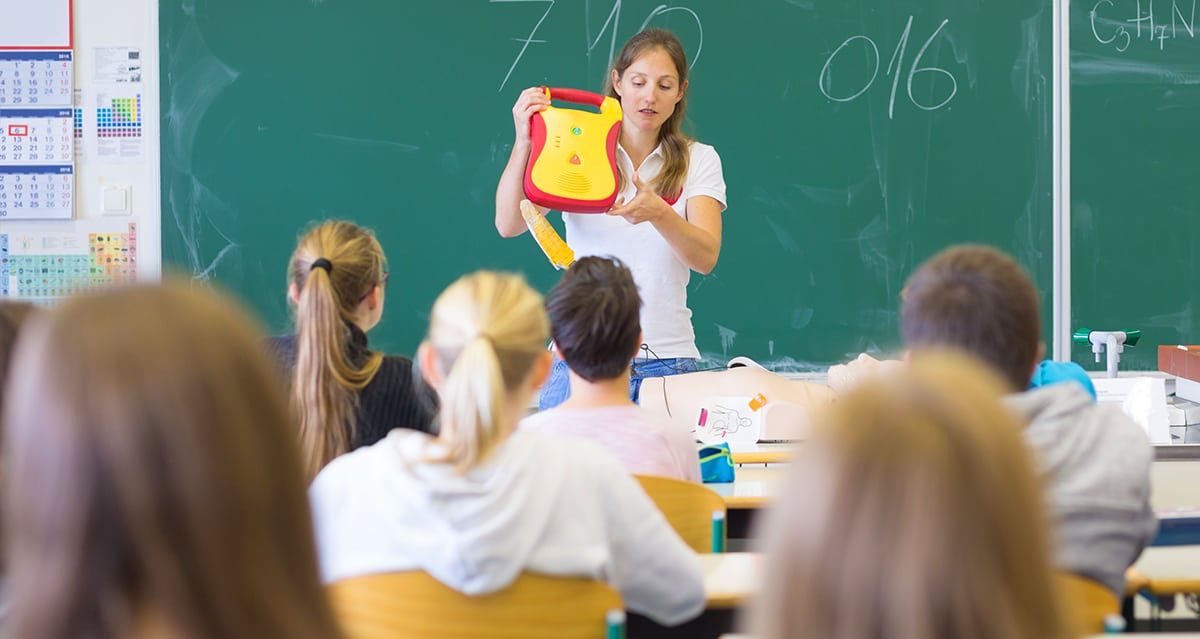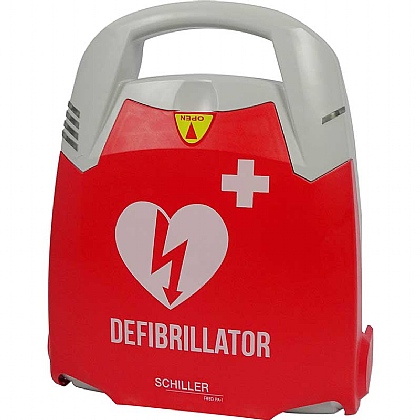
Almost 30,000 out of hospital cardiac arrests (OHCAs) happen in the United Kingdom each year. Less than 10% of these cases involve the use of a defibrillator — a life saving device that can improve a casualty’s chances of survival by up to 70% if used within the first few minutes of a cardiac arrest. Wider access to automated external defibrillators (AEDs) would mean more lives saved in the event of an OHCA.
Access to AEDs in schools greatly increases the safety of both students and teachers, and foundations like the Oliver King Foundation have been campaigning for AEDs to be installed in schools across the UK.
Are defibrillators mandatory in UK schools?

While the government has provided guidance for schools on buying, installing and using an AED, it is not currently mandatory to provide access to an AED in public and educational settings. However, following a decade of campaigning from the Oliver King Foundation, the UK government have recently put forward the Automated External Defibrillators (Public Access) Bill.
This bill would require the installation of AEDs in the following places:
- Schools
- Higher education facilities and other education and skills facilities
- Public buildings
- Sporting facilities
- Facilities that provide care to vulnerable people
- Caravan parks
Does cardiac arrest happen often in children?
While infrequent, sudden and unexplained cardiac arrests can happen to anyone, including children. When someone unexpectedly dies from a cardiac arrest and the cause cannot be found, the incident is classed as sudden arrhythmic death syndrome (SADS). Each year in the UK, approximately 270 children lose their lives at school as a result of SADS. On average, SADS claims the lives of 12 people under the age of 35 every week.Who can use a defibrillator?

AEDs are designed to be used by anyone, even if they haven’t been trained. Each device has clear, step-by-step visual instructions on its usage, as well as verbal guidance delivered during use to make the process as easy as possible.
Teachers or other school staff can easily use a defibrillator as soon as they see a child or other staff member experiencing cardiac arrest. The chance of a defibrillator harming the casualty or the user due to an accident is very low.
How to use a defibrillator
- The first action to take after seeing a child in cardiac arrest is to instruct a bystander to call for emergency help.
- Turn on the AED and follow the voice instructions given. Remove any clothing covering the casualty’s chest and wipe it dry if necessary. Place the sticky pads onto the body as instructed by the defibrillator.
- The AED will automatically analyse the casualty’s heartbeat. If the device determines that a shock is necessary, ensure that no one is touching the casualty. The AED will then automatically deliver the shock. Note that some defibrillators may instruct you to press a button on the device to deliver the shock.
- Immediately begin administering CPR to the casualty. Continue with CPR as instructed by the defibrillator until the arrival of emergency services.
Save lives by providing AEDs
Every school has a responsibility to protect its students and employees from emergency situations, and that responsibility should include guaranteeing access to AEDs. While no legislation currently requires schools to carry defibrillators, the UK Government has plans in place to ensure that schools across England carry the life-saving devices.
Want to know more about the importance of AEDs in schools and other public spaces? Read our blog on everything you need to you about automated external defibrillators.
Read our other blogs for more information on first aid, or contact us for further advice and information on our products.
About the author:
Jo Stokes is a writer, marketer and trained first aider at First Aid Online.
Find out more about Jo.
By Jo Stokes


